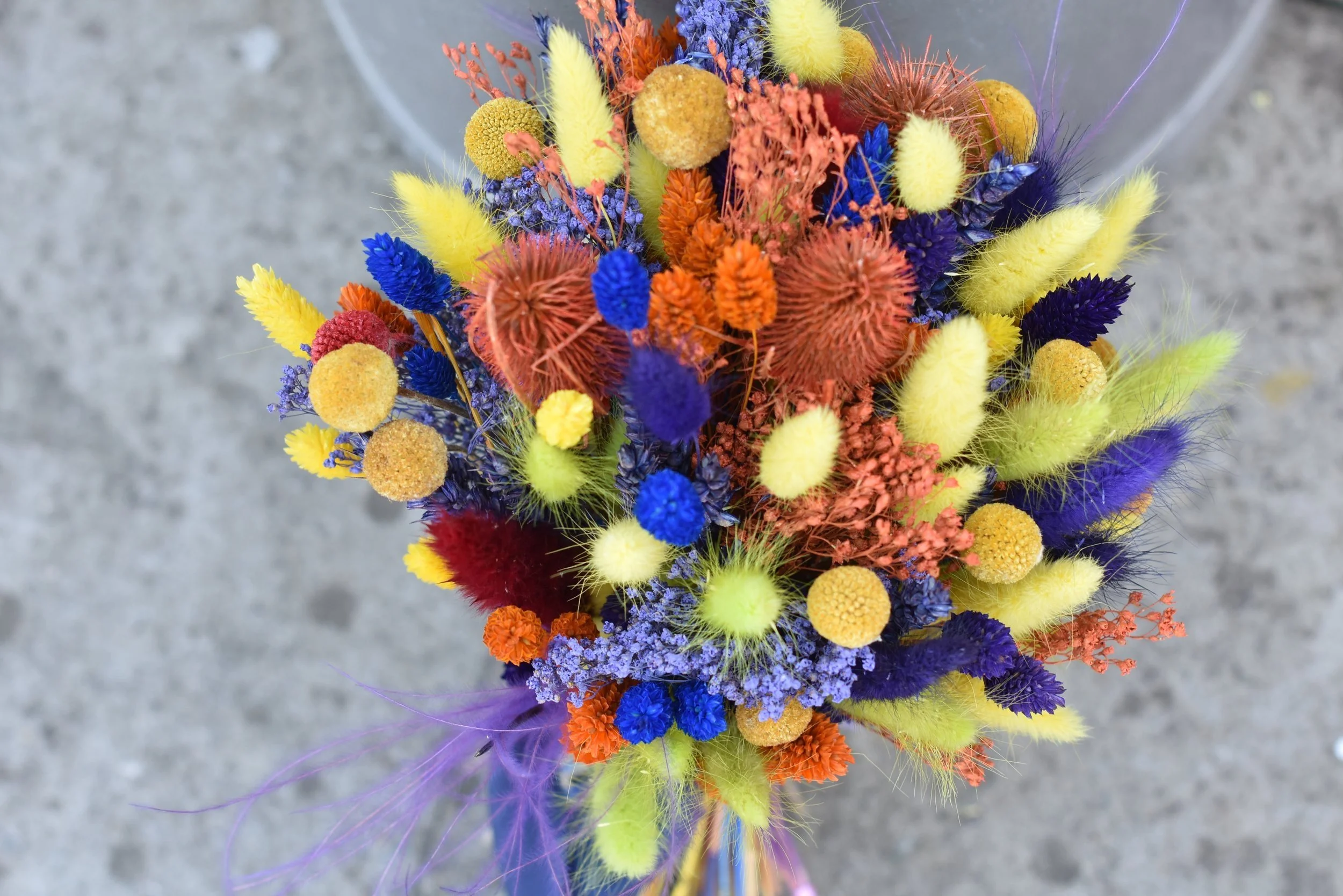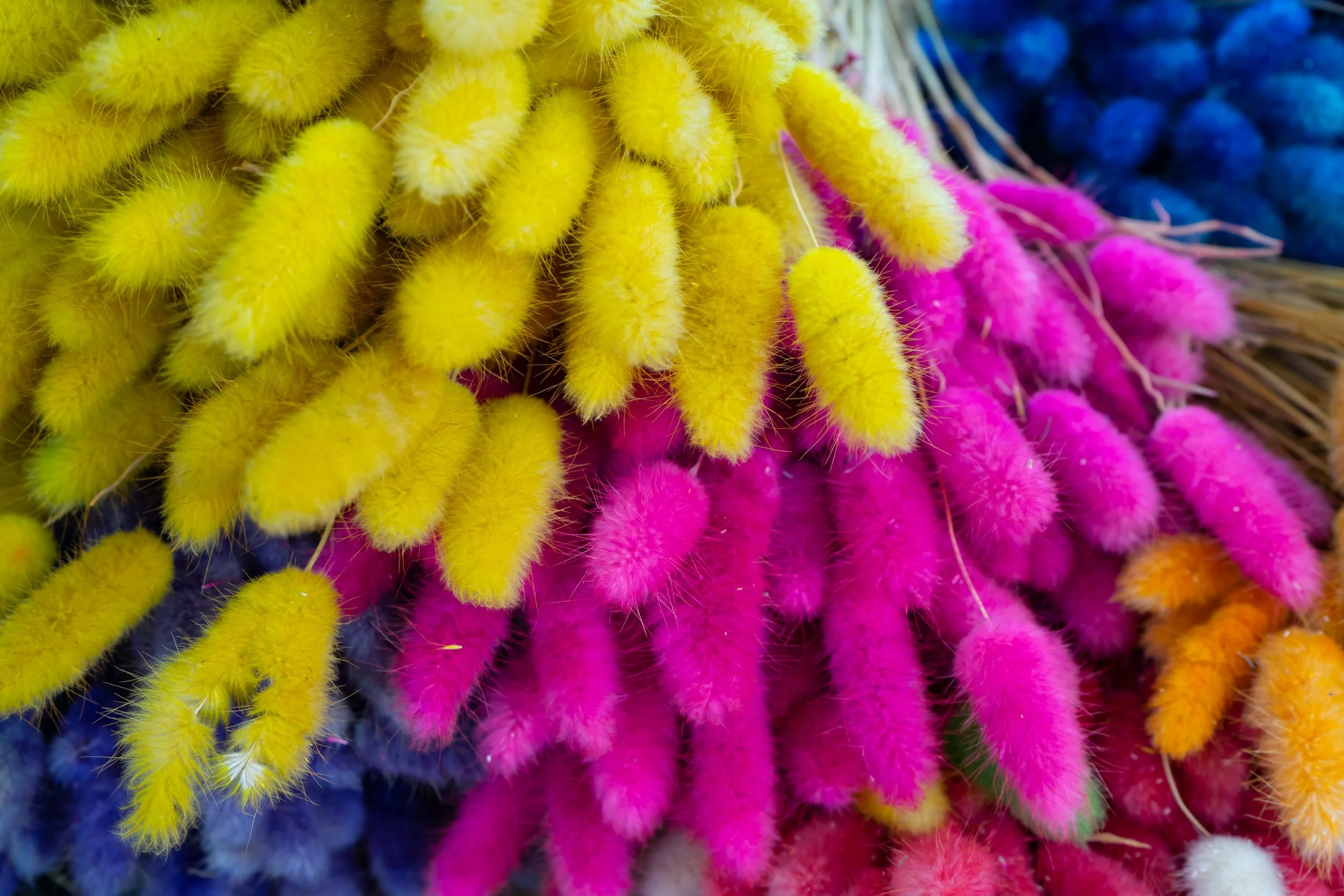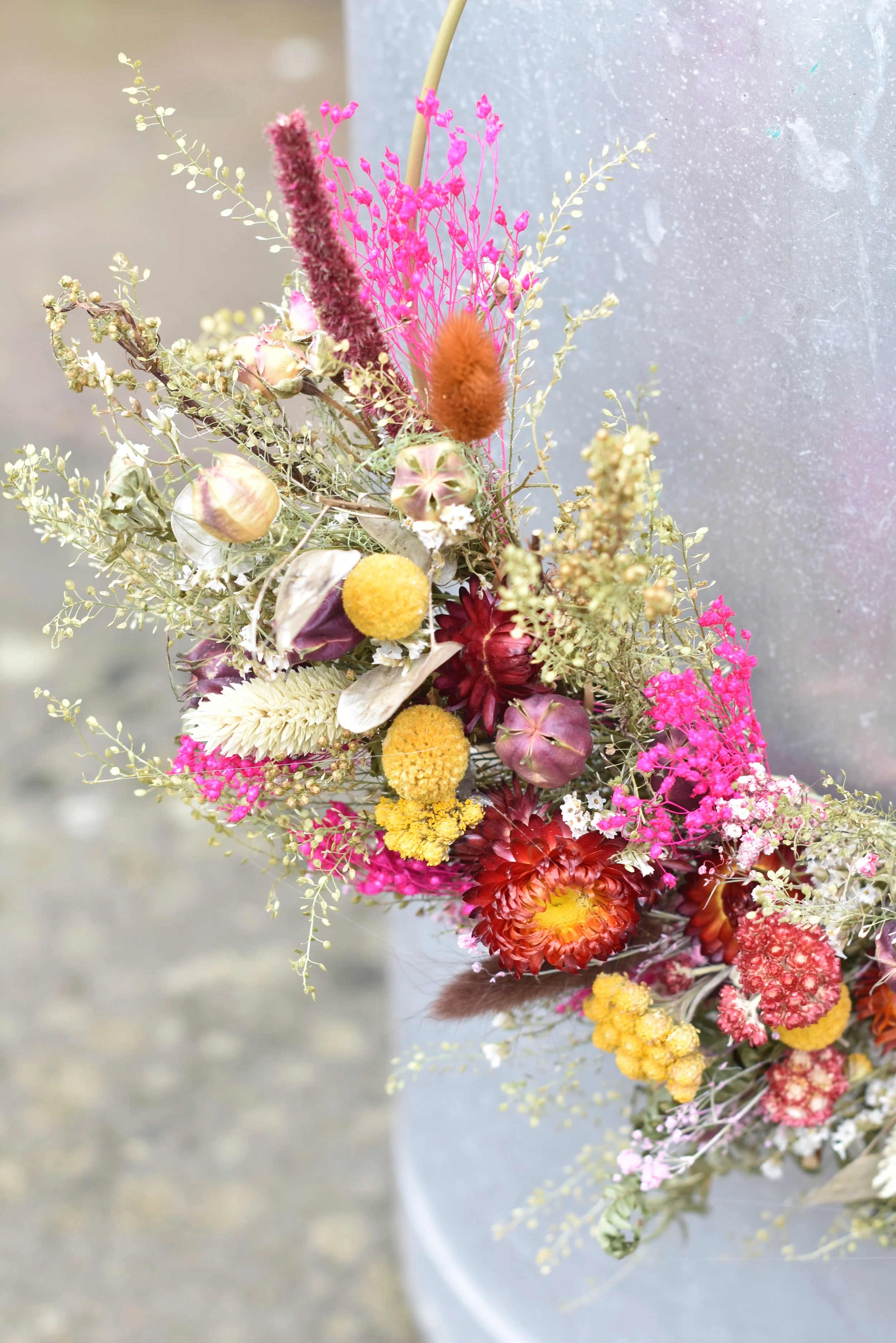are dried flowers eco-friendly?
Dried flowers have made a huge comeback over the past few years, firstly with the ever-popular pampas grass at weddings and in the home, and also the more recent bleached and painted flower products.
There is currently a strong demand for whiter-than-white foliage, such as bleached ruscus – as well as the vibrantly dyed grasses - however, it turns out that the brightly colours drieds are not environmentally friendly at all (and I was unaware of this until quite recently).
If we look at something like - bleached ruscus - (which is certainly having a moment in floral fashion) - a different cocktail of chemicals are used to bleach the foliage of its own natural colour, it removes the yellowing caused by the bleaching process, removes the smell of bleach and other chemicals, and finally adds a strengthening agent to bolster the now fairly weakened stems.
All that effort and process is quite surprising, when it looks like it is just sprayed with white paint.
Additionally, if the foliage was to be coloured then that would likely be an additional chemical treatment.
During the bleaching and dyeing process, it is unclear whether the people carrying out the colouring process are given adequate PPE.
It is also not know how the chemicals are disposed of after the colouring process. If a chemical such as acrylic is used to colour these drieds then this is essentially a single use plastic. Some of these plastics can find their way into rivers and waterways.
More florists and non-florists alike are using these dyed, painted and bleached materials because it’s fashionable. Some businesses are marketing it as - sustainable or eco-friendly - because it’s dried and can be used again and again. But, sadly, the process is far from environmentally friendly.
There are images of bright dried flowers all over Instagram, Etsy and glossy magazines but flowers dyed naturally do not retain the same bright and vivid colours as their fresh versions, and of course, that is part of their appeal.
I appreciate to a non-florist, that sometimes it is difficult to ascertain if dried flowers are actually dyed or not.
The clue is in the colour - if it is really vivid and bright - then just ask yourself ‘is this natural looking?’ - ‘Have I seen this particular flower or foliage growing in local fields this colour?’ If you are not entirley sure, then it is most likely dyed.
Also a bit of disclaimer, yes I have used dyed dried flowers, and yes I have a stash which I was planning to use over the autumnn and winter months, but now I realise the amount of chemicals which are used in their process, I’m going to avoid using them, and will not be purchasing them again.
Working with dried products brings all sorts of new challenges (including lots of mess!) as they can be very fragile and the drying process means the stems are no longer flexible. So it is part of the challenge to stop the designs looking too rigid.
There is a lot to learn when growing and drying British flowers; from when to harvest a flower and to make it dry successfully, to the natural dying process itself and how to store them, and many of us are still finding our way regarding eco-friendly floristry and living! However, going forward, particularly with dried flowers, I will continue to concentrate more on locally grown and sourced flowers and foliage where I can be more sure of the history of the product.




